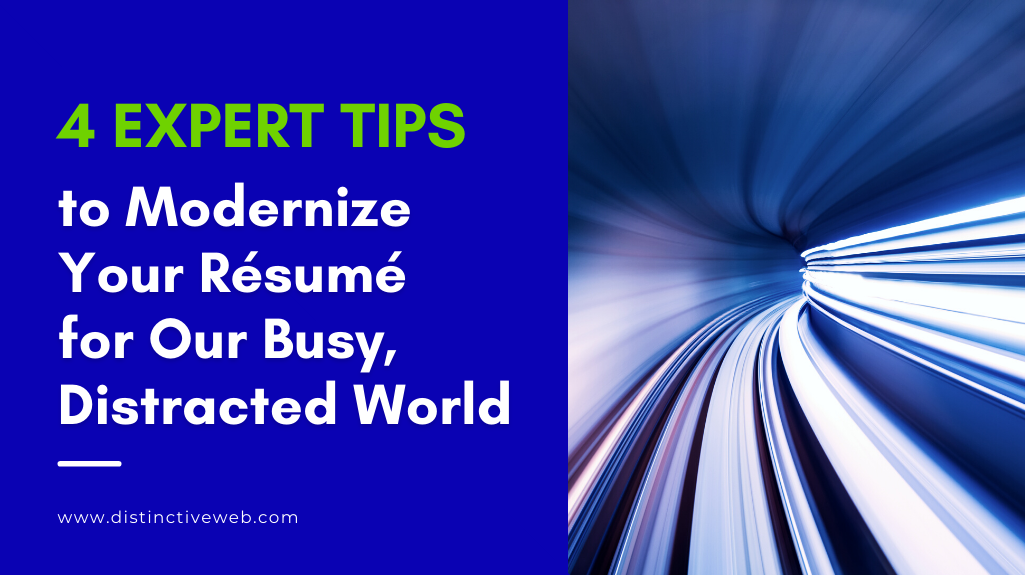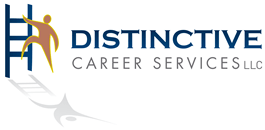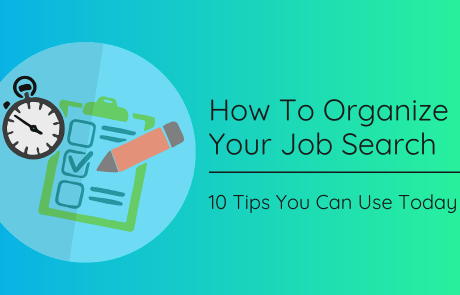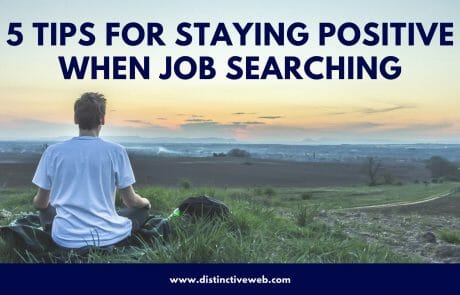
Resumes have changed! In truth, resume styles and trends are constantly changing. But this change is really noticeable when comparing a professionally written resume from ten years ago to a modern resume written professionally in the past few years.
If you are a “seasoned” professional who has simply been making incremental updates to your resume as things change in your career, it is probably time to take a fresh look at your resume. Your older resume may look quite outdated and possibly even old-fashioned now compared to the modern resumes that today’s most competitive job seekers are using.
The Key to the Modern Resume: Fast, Fast, Fast…Faster
 But before we get into how to modernize your resume, let’s explore exactly why you need to modernize your resume—understanding the why is essential as these are the drivers behind the changing resume trends.
But before we get into how to modernize your resume, let’s explore exactly why you need to modernize your resume—understanding the why is essential as these are the drivers behind the changing resume trends.
We live at a time in history in which everything is changing…and changing fast!
But not only is the world changing, but it is also becoming increasingly difficult and even impossible to keep up with it all. We are beyond overloaded with information.
We are bombarded with information everywhere we turn! All of our digital gadgets don’t help the matter. Emails. Texts. Tweets. Facebook massages. News and weather alerts on our phones.
It all comes at us fast and quick. All of this information is more than our brains can handle. It’s exhausting, and it’s stressful.
As a result, many of us have hyperactive online habits and work in a culture of interruptions. I must admit that I am guilty of this. Throughout my workday, I fight against constant distractions. And even after work is over, when I sit down to read a book or watch a movie, I find it difficult to stay focused. There are just too many distractions!
But, this fight to stay focused despite the distractions is even more understandable when you learn that the research shows that humans’ attention spans are getting shorter.
Scientists haven’t quite narrowed in on the cause yet. Maybe shorter attention is a side effect of all our digital communications. Or maybe it is a coping mechanism against information overload. In my own case, I believe that a big part of the puzzle is that technology is training me (and many others) away from slow reading.
But whatever the cause, it is true: humans’ attention spans are getting shorter.
The Impact of Declining Attention on Modern Resumes
Of course, hiring managers and recruiters are also dealing with these same woes:
- Information overload
- Continual distraction in a digital world
- Decreasing attention spans
And if you haven’t guessed, these are the driving forces behind the changes in modern resumes, which all center around writing shorter, leaner, more succinct resumes in which every word counts. Then this tight, concise writing is combined with other strategies known to improve attention and comprehension.
Here then, are four expert resume tips for modernizing your resume.
1. Enhance Eye-Appeal
You must design your modern professional resume to catch attention and be eye-appealing. But it is more than just professional appearance alone—although a beautiful resume really does matter in relation to the first impressions that your professional resume makes.
Rather, you should use design in thoughtful and strategic ways that make your resume easier to read and draw the eyes of the hiring manager from key point to key point.
Now, it might seem eye appeal should be the last item on my list. Design is, after all, the icing on the cake. The finishing touch on your powerful, compelling, persuasive resume text.
(Your resume is powerful, compelling, and persuasive, isn’t it? If not, we are here to help you.)
While that is true, it is also true that all of that compelling, persuasive text won’t mean a darn thing if you don’t get and keep the attention of your intended reader.
The simple fact is that humans are visually wired, and a large percentage of each of our brains is devoted to processing visual information. Our brains register graphics faster than text. Graphics are more memorable than text. And color has been shown to increase comprehension and increase readers’ attention spans.
This is why modernizing your resume almost always includes using splashes of color to brighten up the boring black-and-white text resumes of yesteryear. A colorful header, for example, can make all the difference. Even a minimalist design that makes good use of common design elements such as white space and bullet points, and color to call out your resume section headings will get the attention of hiring managers.
Inserting charts and graphs and graphical representations of key concepts has become a key strategy in modernizing resumes too, as has paying careful attention to every other detail, such as white space and your resume fonts.
Of course, professional resume help from a resume writer who is also a talented designer is your best bet as a job seeker. Most job seekers don’t have the skills to craft a modern resume design, never mind the objectivity to write their own resume. But if you have your resume content already written, and you are happy with it, using a high-quality resume design template can make transforming your outdated text-only resume with a modern resume design quick and easy.
2. Write Tight and Lean
The content of your modern resume should be brief, punchy, value-infused, and written in ways that capture hiring managers’ attention by speaking directly to their needs.
Don’t expect your reader to take the time to figure things out independently. They won’t.
Write your professional resume (and cover letter) so the reader knows (with nothing more than a glance) exactly how what you are offering will add value, solve their problems, meet their challenges, and achieve their goals.
Recruiters and prospective employers scan resumes in mere seconds. The first review is nothing more than a process to filter out unqualified candidates.
Try to put yourself in the shoes of the person reviewing resumes, quickly scanning through them. It is only if something literally “pops” out – something that directly relates to a need or a problem that the reader hopes to solve – that the resume will grab attention and be set aside for a more thorough review. Try to figure out what that message is, and make sure you write your modern resume to include it.
Choosing the right resume format is key. But your resume content is also key. Every word and element in your resume should serve a purpose and support the target of your job search. This might mean leaving out degrees or certifications, or even early work experiences that no longer reflect your career direction.
If you leave extra data that does not support and promote your job target in your resume, you will dilute your resume focus and confuse the reader.
Don’t let that happen.
Carefully read the job description for your dream job and craft your resume and cover letter to address each of the required and desired skills outlined in the job posting.
While writing lean and tight isn’t easy and takes time and thought and effort, doing so is respectful of the readers’ time and makes your modernized resume much easier and faster to read.
3. Tell a Story
The concept of storytelling in business has become quite popular in the recent past. But, storytelling has always been central to our work for those of us who work in the personal branding and career marketing spaces.
Writing stories in a resume is a proven way to engage readers, create emotion, and entice readers to keep reading. In short, stories win attention and keep attention. Stories are essential when modernizing your resume.

Use your modern resume text to tell a compelling story of the challenges and problems you have faced, the actions you took to meet those challenges, and the results and benefits of those actions – the actual return on investment of your actions.
Without a story, your resume is just a bland list of disconnected facts on paper. The best resumes are self-marketing documents, and storytelling in your resume transforms it into that.
Storytelling doesn’t just humanize you beyond lists of jobs and education on a piece of paper; it does it in a way that creates trust and connects your value offering back to the recruiters’ needs.
In other words, by painting a picture of how you have added value in the past, you help them to envision how you will add value in the future to their organization.
For modern resumes, the most common storytelling technique is often referred to as the Challenge – Action – Result — Strategic Impact technique–the CARS technique. I’ve written about this with lots of resume examples in other blog posts.
4. Don’t Forget the Computer Reader
And last but not least, when you are modernizing your resume, you must create an applicant tracking system (ATS) friendly resume.
In simplified terms, if you don’t know, an ATS is, at its core, just a database. It is a database where resumes can be stored, tracked, and keyword searched.
The move that so many hiring managers and recruiters have made to store the resumes of applicants digitally in applicant tracking systems has driven this trend. Yet, this shift to digital storage itself goes back to the original point of this article. Using an applicant tracking system is all about saving time and making things more efficient for employers and recruiters in this fast, information-overloaded world we all share.
Before launching your job search, when it comes to modernizing your resume, this means that overshadowing everything else, you need to make sure your resume is ATS compatible.
I don’t care whether you are a new grad fresh out of college or a senior-level executive; if you intend to submit your resume digitally to anyone, you need to care about whether or not it is ATS-friendly. In other words, you need to know that the text will parse correctly and be stored accurately. There are multiple resume formats for you to choose from, and choosing the right resume format and layout plays a key role in ATS compatibility.
And, you especially need to make sure that your resume includes the types of keywords that hiring managers will input into the ATS when they search for a candidate like you. In other words, you must make sure your resume is written to be keyword rich.
But, as you think about creating an ATS-friendly, modern resume, I do want to warn you that there is more outdated ATS misinformation out there than there is accurate information, so be careful who you listen to. This is especially true because technology is advancing so quickly. Even a blog post on ATS standards written several years ago might now be outdated.
My best advice, of course, is to work with a trained, experienced resume writer. At Distinctive Career Services, we continually attend workshops and training on this topic, and if you work with one of our team at Distinctive Career Services, you won’t have to worry about it. We will ensure your resume is modernized and meets current standards.
But, if you do decide to go it alone and have decided to use a modern template for your resume, make sure it is an ATS-friendly resume template. This is important, because many of the modern resume templates you find free or cheap on the Internet are not ATS-friendly. Using a beautifully designed resume template won’t do you any good if it isn’t ATS compatible too.
The best resume templates balance modern resume formats and contemporary style with resume layouts that are ATS compatible. A resume template designed for Microsoft Word is the best choice for most job seekers. Modern applicant tracking systems can universally handle resumes formatted in MS Word, but the same is not true of other formats such as resume templates designed for Google Docs or Canva.
LinkedIn Profiles – Your Future Resume?
To wrap up, no discussion of modernizing your resume would be complete without mentioning LinkedIn. Many say that LinkedIn will replace resumes in the future.
While I believe there will always be a place for traditional resumes, I agree that, eventually, LinkedIn will play a larger role in your career and job search than a traditional resume. We aren’t there yet, but the day is coming.
With this in mind, don’t ignore your LinkedIn profile. And if you haven’t opened a LinkedIn account yet or built out your profile, do so now. LinkedIn is an incredibly powerful forum for networking and brand building. Not only will you find it incredibly helpful and useful in the present. If you take the time to build out your profile now, you will have a head start when the future is the present, and your online presence is more important than your resume.
Modern Resume Examples
As they say, a picture is worth a thousand words. If you’d like to learn more about modern resumes and how they are written and designed to make a great first impression on recruiters and employers, it may be helpful to review the resume examples from our portfolio showing samples of resumes and other career documents such as example cover letters. Some of the most popular modern resume examples include:
Frequently Asked Questions
What does it mean to modernize your resume?
Modernizing your resume means updating it with the latest styles and formats that make it look fresh and appealing. This includes using current fonts, a clear layout, and making sure it has the right keywords that employers are looking for.
Why is it important to have a modern resume?
It's important because a modern resume shows that you are up-to-date with how you present your skills and experiences. This can help your resume stand out and show employers that you know how to make a good impression.
What should I remove from my old resume?
You should remove outdated information like old job roles that aren't relevant to the positions you're applying for now. Also, take out any personal details like your marital status, birthday, or full address, as these are no longer commonly included.
How can I use keywords in my resume?
To use keywords effectively, first look at the job description of the position you are applying for. Use the same words and phrases from the job description in your resume, especially in your skills and experiences sections. This helps your resume match what employers are looking for.
Can I use colors in my resume?
Yes, you can use colors, but it's best to keep them minimal. Choose one or two subtle colors for headings or to highlight important points. This can make your resume more visually appealing without being too distracting.
What format should I use for my resume?
The best format to use is a simple and clean layout with lots of white space. Use a professional font like Arial or Times New Roman, and make sure your sections are well-organized so that employers can easily read your information.
Is it okay to have a two-page resume?
Yes, if you have a lot of relevant experiences and skills, it's okay to use two pages. Just make sure all the information you include is important for the job you're applying for. Keep it concise and relevant.
Should I include social media links on my resume?
You should include links to professional social media profiles like LinkedIn, especially if they show your professional achievements or projects related to the job. Avoid including personal social media accounts that don't relate to your professional life.









